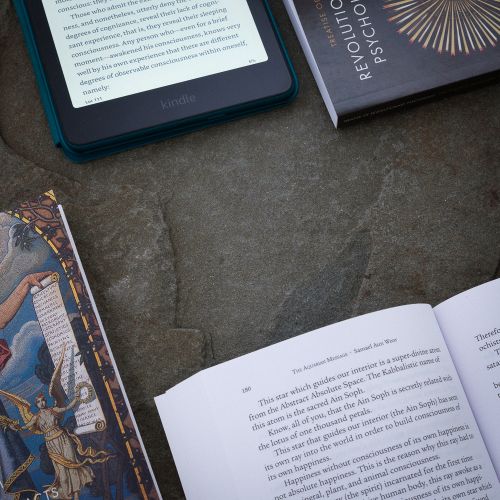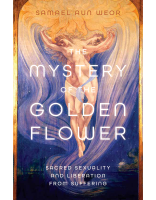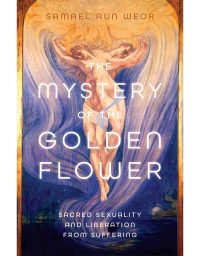There is no subject more sensitive, difficult, and personal than sex. The life of every human being depends upon sex, rotates around sex, and even though we do not realize it, is defined by sex. Sex creates everything about us, not only physically, but psychologically and spiritually. As Samael Aun Weor wrote:
“Sexual energy is divided into three distinct types.
“First: the energy having to do with the reproduction of the race and the health of the physical body in general.
“Second: the energy having to do with the spheres of thought, feeling, and will.
“Third: the energy that is found related with the divine spirit of man.
“Indeed, sexual energy is without a doubt the most subtle and powerful energy normally produced and transported through the human organism. Everything that a human being is, including the three spheres of thought, feeling, and will, is none other than the exact outcome of distinct modifications of sexual energy.” —Samael Aun Weor, The Perfect Matrimony (1950)
What we are now or what we will be in the future is not just the result of the union of our parents sometime in the past, but an ongoing process of development throughout our lifetime that is powerfully influenced by our sexual energy. Our use of sexual energy is the utilization of the same energy that formed us in the womb. That is, each use of sexual energy creates, but what it creates depends upon the nature of the action. Furthermore, each thought or feeling that is inflamed by sexual energy is also incredibly powerful, and leads to equivalent results. This is the foundation of the esoteric knowledge studied in the heart doctrine of all the great religions, although it was hidden from public view.
In China, it was studied under the guise of Taoism and alchemy, and is well described in the 2,400 year old text called Hua Hu Jing:
“A person’s approach to sexuality is a sign of his level of evolution. Unevolved persons practice ordinary sexual intercourse. Placing all emphasis upon the sexual organs, they neglect the body’s other organs and systems. Whatever physical energy is accumulated is summarily discharged [through orgasm], and the subtle energies are similarly dissipated and disordered. It is a great backward leap. For those who aspire to the higher realms of living, there is angelic dual cultivation [transmutation]. Because every portion of the body, mind, and spirit yearns for the integration of yin and yang, angelic intercourse is led by the spirit rather than the sexual organs. Where ordinary intercourse is effortful, angelic cultivation is calm, relaxed, quiet, and natural. Where ordinary intercourse unites sex organs with sex organs, angelic cultivation unites spirit with spirit, mind with mind, and every cell of one body with every cell of the other body. Culminating not in dissolution [orgasm] but in integration [sublimation], it is an opportunity for a man and woman to mutually transform and uplift each other into the realm of bliss and wholeness.” —Hua Hu Jing
This approach to sex is hidden in every religion, and forms the basis of this book.
The purpose of this higher use of sexuality is to liberate us from suffering. To understand that, Samael Aun Weor explores a variety of topics related to the use and misuse of sexual energy, and is particularly concerned with helping those who are tired of suffering, who are weary of theories and beliefs, and want to experience the truths pointed towards by all religions. That is, this book is intended for practical application, not philosophy or debate.
It is only through experience that we can know what is true and what is not. This is the perspective of the Gnostic: neither believing nor disbelieving, but applying the proper tools that lead toward personal experience. By means of allegory, one can never have Gnosis of pregnancy and childbirth until one has been a mother. Even a famous doctor or a writer of a thousand books about pregnancy will not know pregnancy like a mother knows it. Similarly, one can never understand the sexual mysteries hidden in all religions until one has experienced them. Theories and beliefs are illusions. When one has practical experience, one does not need theories or beliefs. All of the writings of Samael Aun Weor come from this essential basis—Gnosis: conscious experience—and we, his readers, should adopt the same guideline: to neither accept nor reject, believe nor disbelieve, but to experience for ourselves.
To reach the truth, it is often necessary to revise our concepts and beliefs. As an example, most Westerners believe the word yoga refers to stretching exercises, but this is very far from the real meaning. The Sanskrit word yoga means “to unite” and refers to an ancient and sophisticated spiritual methodology that “unites the essence with God,” and is comprised primarily of psychological and spiritual techniques to dominate and eliminate our lower passions so that our purified essence (consciousness) can return to its source: the Divine. The stretching exercises (hatha yoga) were developed so that the physical body could endure the difficulties of the real yoga. And, the basis of that yoga is the conquering of lust, as Krishna said in the most important book of India:
“It is the lust born out of passion that becomes anger when unfulfilled. Lust is insatiable and is a great devil. Know this as the enemy.
“As the fire is covered by smoke, as a mirror by dust, and as an embryo by the amnion; similarly, Self-knowledge gets covered by different degrees of this insatiable lust, the eternal enemy of the wise. (3.38-39)
“The senses, the mind, and the intellect are said to be the abode of lust; with these it deludes a person by veiling the Self-knowledge.
“Therefore, O Arjuna, by controlling the senses first, kill this devil of desire that destroys self-knowledge and self-realization.” —Bhagavad-gita 3.37-40
Many of the terms used in this book are used from the basis of the real meaning, not necessarily the meaning we have heard or read from others. Therefore, in order to aid your understanding of the many terms used in this book, we have included footnotes and a glossary. For a more extensive glossary and other references, visit glorian.org.
Mantra Pronunciation
Chanting or repetition of sacred sounds is universal in all religions. In Sanskrit, these sounds are called mantras, and their repetition is called japa.
Generally speaking, the sounds in mantras are pronounced using the ancient roots (Latin, Sanskrit, etc):
- I: as the ee in “tree”
- E: as the eh in “they”
- O: as the oh in “holy”
- U: as the u in “true”
- A: as the ah in “father”
- M: extended as if humming, “mmmmm”
- S: extended like a hiss, “sssss”
- CH: if the word is Latin, pronounced as k. If the word is Hebrew, pronounced as a scrape in the back of the throat, as in “Bach”
- G: In most mantras, G is pronounced as in “give”
- J: In most mantras, especially those from Sanskrit, the J is hard, as in “job.”
Should Mantras be Spoken Aloud or Silent?
“...the verb is of triple pronunciation and that it endows three norms: verbal, mental, and conscious. One can articulate with the creative larynx, one can vocalize with his thought, and one can vocalize with the superlative consciousness of the Being.” –Samael Aun Weor, Esoteric Medicine and Practical Magic
“There are three ways that one learns to use a mantra, to repeat prayers or sounds. They are quite simple: aloud, quietly, or silently.
Vaikhari Japa: verbal, loud
Upamshu Japa: whispered or hummed
Manasika Japa: mental, silent, without moving.” –the lecture Yoga of Devotion
“The fruits of whispered japa are a thousand times more powerful than the verbal japa, and the fruits of the silent, mental japa are hundreds of thousands of times more powerful than the verbal japa. Mental japa can even be kept up while at work.” –Swami Sivananda







